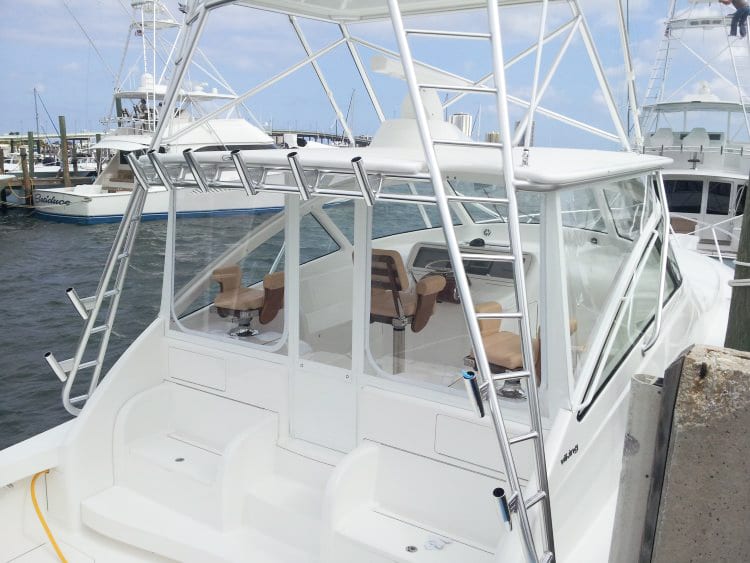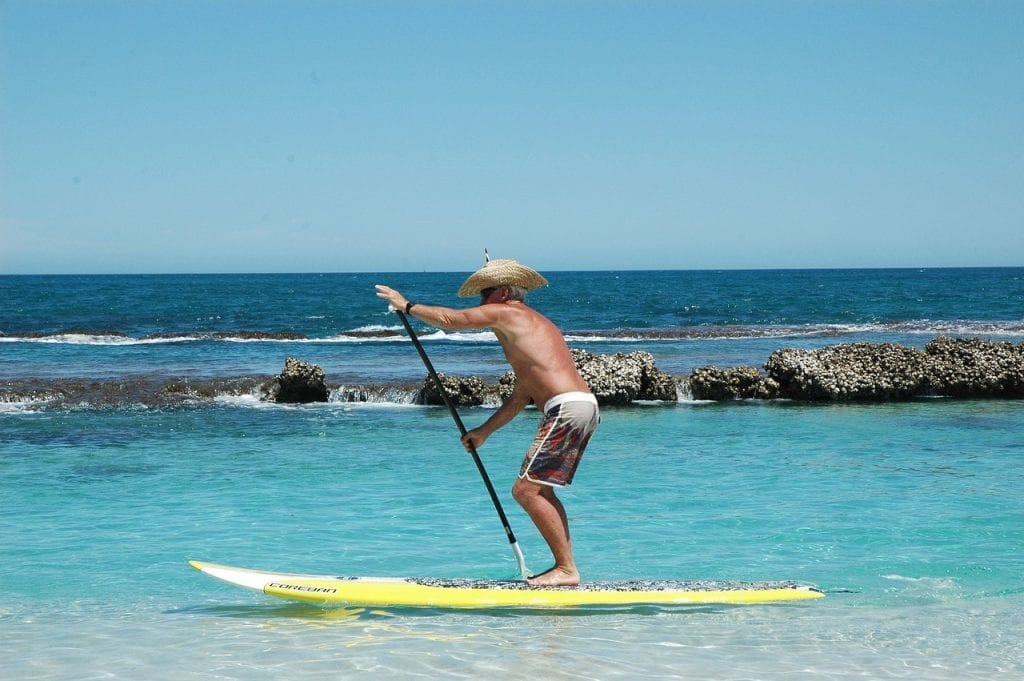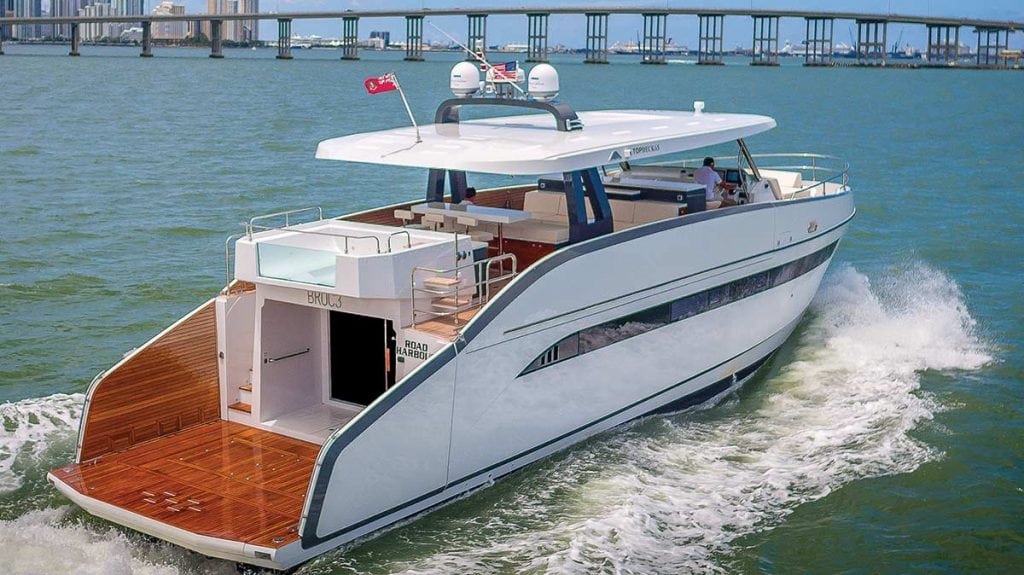Replace Your Enclosures
Blurry or worn view? It may be time to replace your enclosures.
While under way, if you confuse a scratch on your boat’s enclosure with a buoy in the channel, then it’s time to repair or replace your acrylic, vinyl or another type of clear marine enclosure. The scheduled down period during haul-out or any time when convenient at a marine service yard gives the professional the time to do it right. Today, the choices of clear enclosures are myriad and include products made of acrylic, polycarbonate and vinyl.
As a material’s primer, acrylic enclosures are semirigid and include brands like EZ2CY. Polycarbonates fall under brands such as Makrolon, and clear vinyl includes CrystalClear, Regalite and Strataglass. Each has its own distinct attributes and applications.
Acrylic
In the sub-tropics like The Bahamas and South Florida, boats must endure high humidity and temperature swings, and that’s where acrylic works the best. Acrylic does not fade or yellow over time, and you can also buff out scratches. “EZ2CY is 80-gauge acrylic and it doesn’t roll, but is made to lift up,” explains Andy Flack, project manager for Canvas Designers in Riviera Beach. “The panels pin to the roof or the bridge when you don’t need them. Because of the thickness, it can withstand a lot more air pressure when under way and holds in the cool air if you use an air conditioner.”
For boats already equipped with EZ2CY enclosures, the refurbishing and buffing process during haul-out is simple. “Once at the yard, do an inspection and if it’s scratched, have
the yard take it out and send it to your EZ2CY dealer,” Flack recommends. “The dealer will have it buffed and polished, then hang it or store it and bring it back to the boat looking like new. Then it can be re-installed so it’s perfect when the boat comes out of the yard.”
Vinyl
Many boat owners need enclosures that can be rolled up out of the way, and that’s where clear vinyl works well. Clear uncoated vinyl is pliable so it’s easy to roll up, but users
must take care because it is easily scratched. Strataglass incorporates the scratch-resistant coating VueShield that helps reduce scratches. Uncoated vinyl is less expensive than coated vinyl, and both products must be handled carefully so they don’t become wrinkled or creased. In addition, vinyl will become yellow or hazy over time.
 Polycarbonate
Polycarbonate
Polycarbonate enclosures like Makrolon are semirigid, so they can’t be rolled up and must be pinned or unzipped and removed. Scratch-resistant coatings are used to protect the surface. Polycarbonate can be expensive; however, it offers excellent visibility. Polycarbonates are popular in northern climes and Great Lakes areas where the sun and
temperatures are not as extreme as in tropical climes. Because it’s a petroleum-based product, polycarbonate can yellow in tropical weather.
Maintenance
Once the new enclosures are in place, proper maintenance can help them last a long time. In the saltwater environment, the primary goal is to displace the saltwater by not using harsh chemicals. Soapy water is the strongest solution you should use because many cleaners use ammonia or alcohol, which will break down acrylic and cause it to haze and crack. Once that happens, you can’t buff it or sand it out. “Have a separate set of cleaning tools that don’t get used anywhere else on the boat,” Flack instructs. “You don’t want to pick up any dirt or debris on your cleaning tools that could harm the glass.”
Fasteners
How the enclosures are fixed to the boat is another choice that boat owners must make. Haul-out is also the time to service the zippers, Velcro and fabric borders on your enclosures. Fasteners such as slides, snaps and zippers are used with acrylic or vinyl products from companies like Sunbrella and Herculite.
Canvas Designers uses Stamoid, a dimensionally stable vinyl from Serge Ferrari. “We then connect the glass to the boat using a track-to-track application,” says Flack. “There
is a track in the hard top of the boat, and there is a track on the coaming of the flybridge. We sew a bolt rope on the top, and the panel on the bottom zips closed.”
Timing
How often you need to replace your enclosures depends on how often you use your boat. “Some people own boats that are 25 years old that don’t have 1,200 hours on them,” Flack says. “Some of the sportfishing boats are two years old and have 3,000 hours on them; they run them all over the world.”
Sportfishing boats that compete in international tournaments often experience a worn or broken enclosure in a foreign port, and that’s where it can get tricky when trying to repair or replace the panel. The ability to have a replacement shipped to your location is something to consider when purchasing enclosures. Computer-aided design (CAD) software can store the measurements of your boat’s enclosures for just such a situation.
“If we put an enclosure on a 72 Viking here in Riviera Beach, it is also stored in CAD,” says Flack. “Then if they are down in the Dominican Republic or Puerto Rico and they absolutely tear a panel up, we can make that panel from a computer file. We can ship that panel down to them and be 100 percent confident that it will zip onto the boat.”
By Doug Thompson, Southern Boating March 2019















